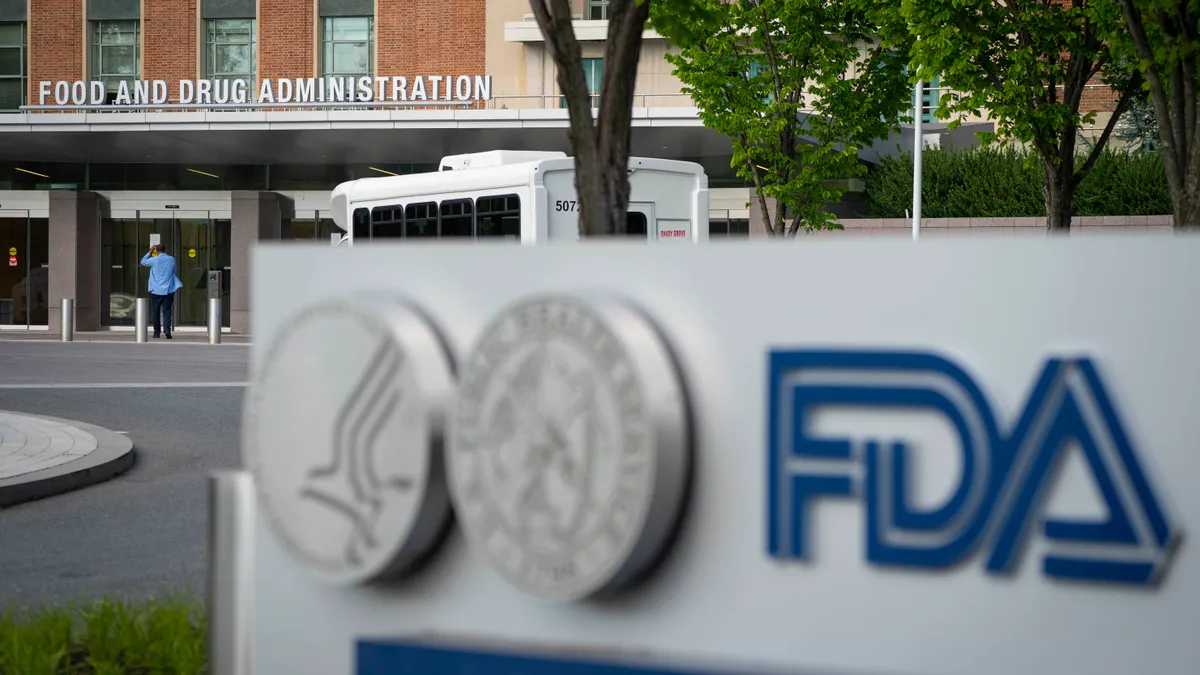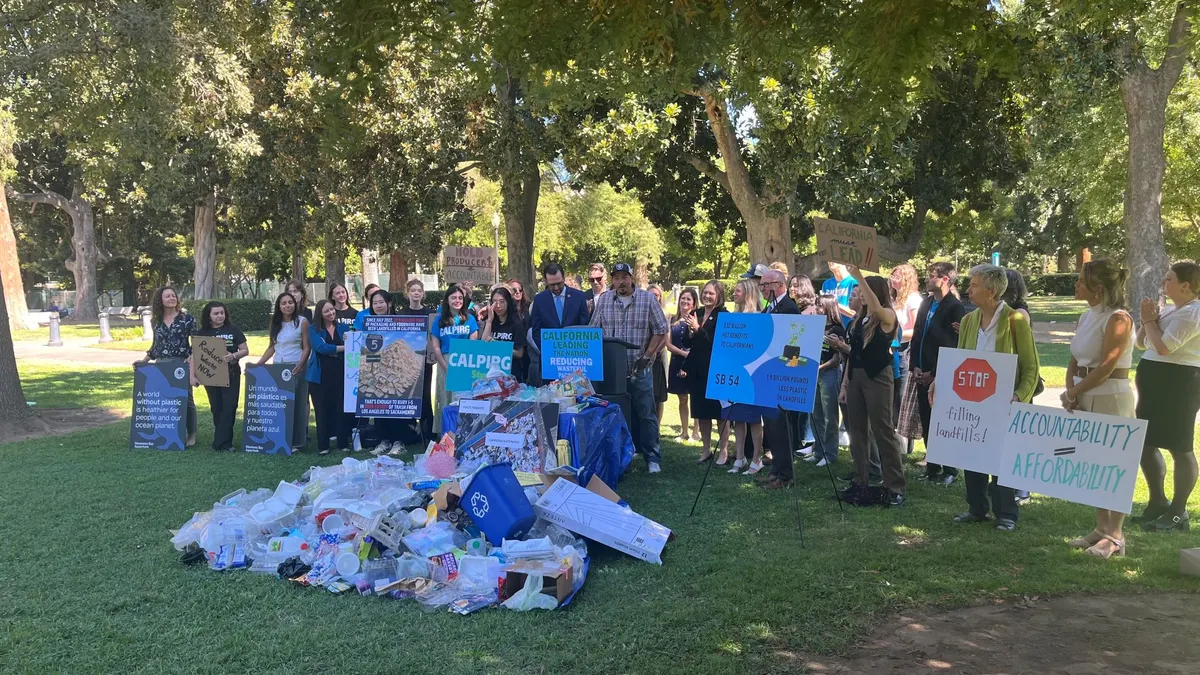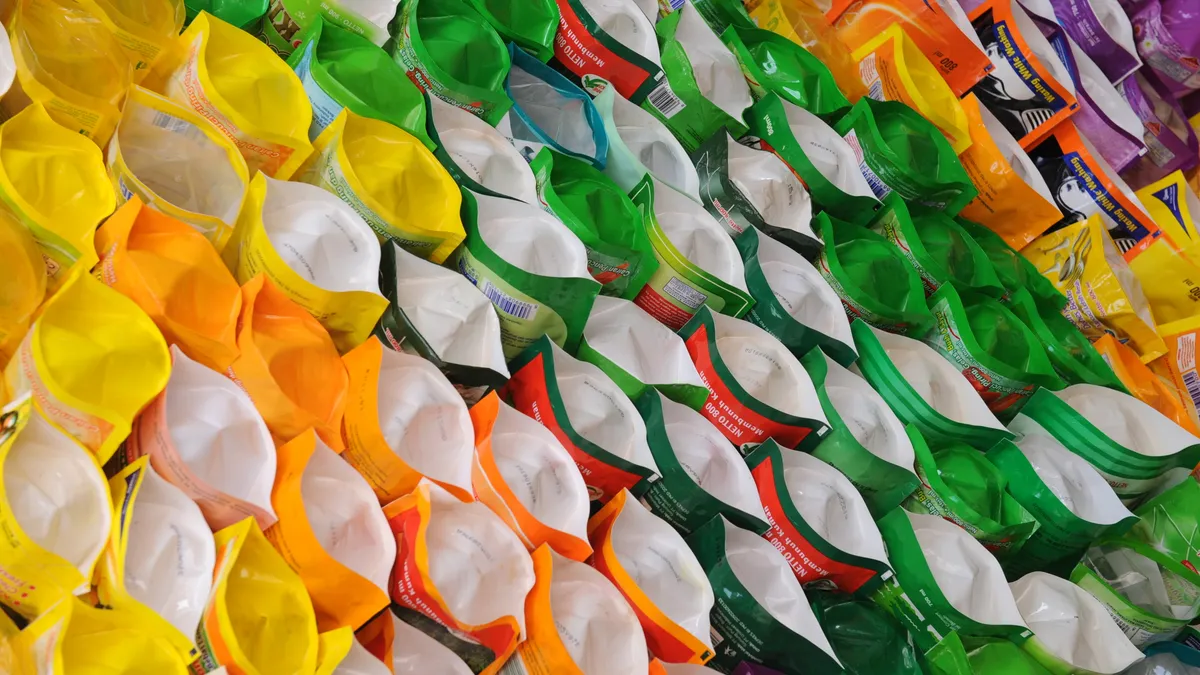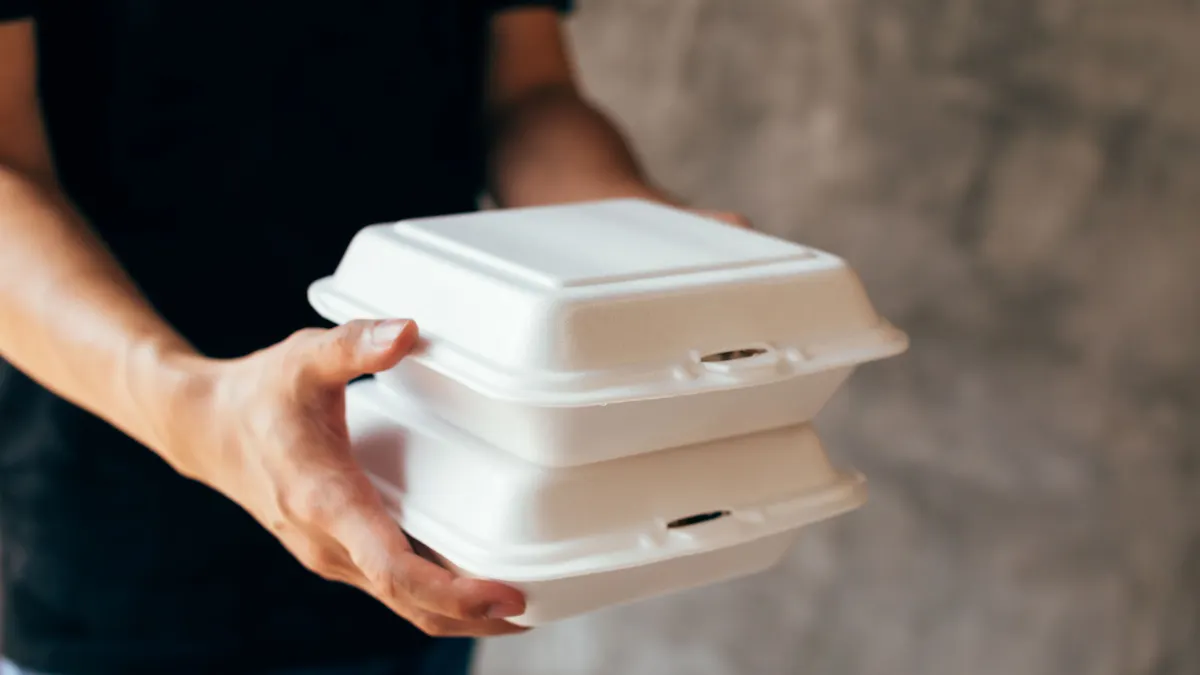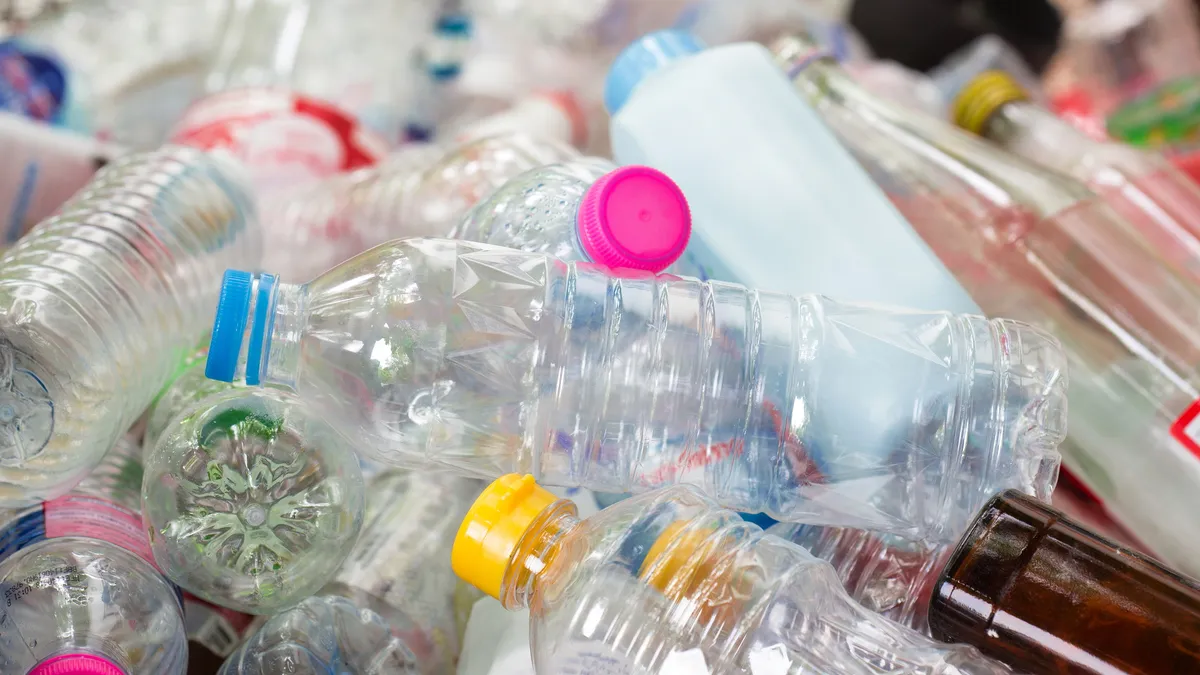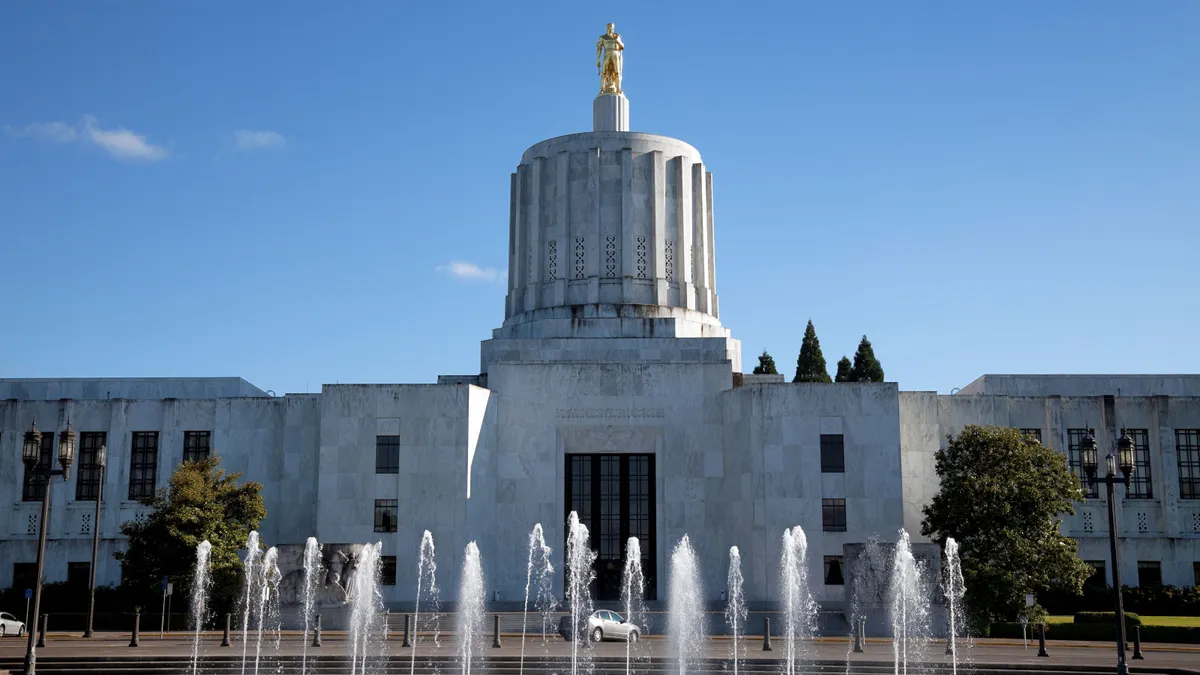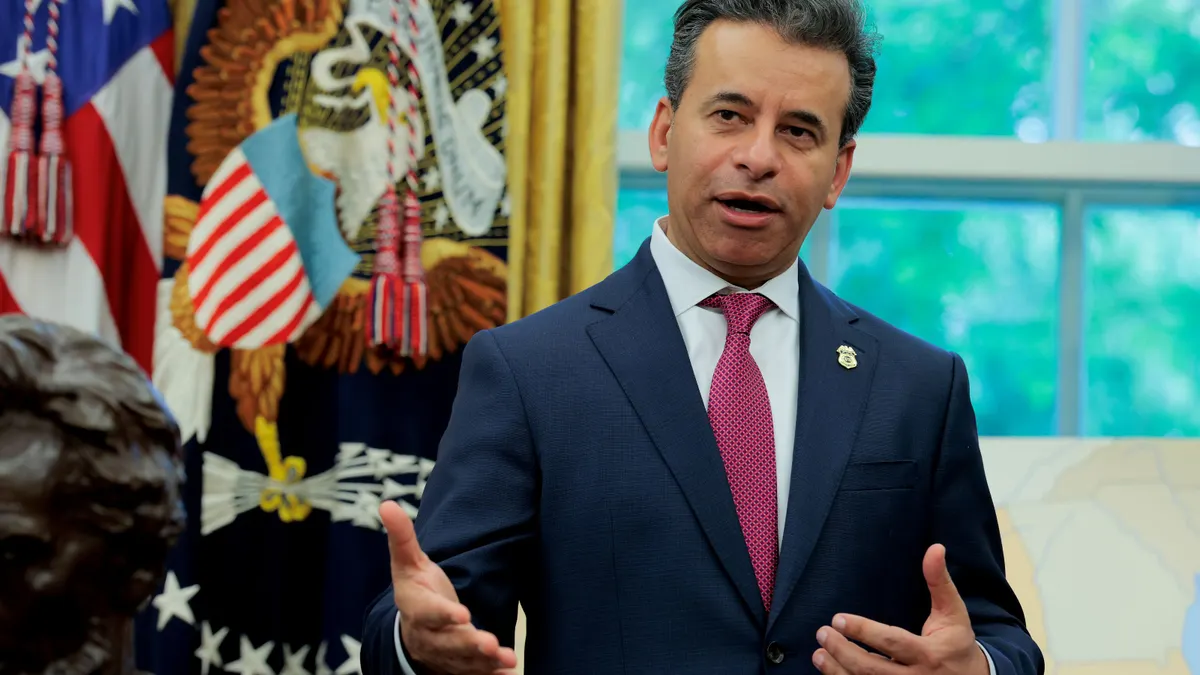After the U.S. Food and Drug Administration announced that PFAS-containing grease-proofing substances used on paper-based food packaging are no longer being sold by manufacturers for food contact in the U.S. market, observers say some ambiguities remain about the scope of the announcement’s significance, alternatives adopted and how the absence of those per- and polyfluoroalkyl substances will be tracked. And packaging companies still face a patchwork of state regulations on PFAS.
PFAS refers to thousands of long-lasting chemicals now found in the environment, food and humans, that are linked to harmful health effects. For food packaging like fast-food wrappers, take-out containers or popcorn bags, they’ve been used to provide water resistance and prevent leaking of oil or grease. Addressing PFAS in drinking water and other contexts has been a priority for the Biden administration’s EPA.
The agency declared that it has eliminated “the primary source of dietary exposure to PFAS from authorized food contact uses.” It comes as a result of a 2020 voluntary market phase-out among a handful of companies making the materials used on paper and paperboard. FDA said it confirmed that other manufacturers had also voluntarily ceased sales of other food-contact substances containing different types of PFAS, also intended for use as grease-proofing agents.
“While the original commitment letters received by the FDA from the manufacturers state that paper and paperboard products containing these food contact substances could take 18 months to exhaust the market supply from the last date of sale, most of the companies have exited the market prior to their original phase-out date,” FDA reported in its announcement.
Sam Jockel, a partner at law firm Alston & Bird, said the FDA’s announcement is the latest development in the industry’s pattern of phasing out these chemicals in the food contact space. Jockel pointed to FDA revoking clearances in 2016 for use of certain long-chain PFAS compounds in food contact paper and paperboard applications, as well as the 2020 phase-out of the manufacture of short-chain PFAS compounds.
“Despite these recent developments, there are still authorizations that allow for use of PFAS in other food packaging applications — and PFAS can also be present as an impurity or contaminant in food packaging materials, even if not intentionally added,” Jockel said in an email.
Melanie Benesh, vice president of government affairs at Environmental Working Group, said the recent announcement doesn’t cover all types of PFAS that could show up in food packaging — such as through plastic packaging or food processing. Benesh also noted there’s not yet a regulation backing up this voluntary initiative and added that FDA has not responded to a years-old petition calling for a ban on all PFAS in food packaging.
PFAS monitoring and alternatives
There were four manufacturers involved in voluntary agreements to phase-out grease-proofing substances containing certain short-chain PFAS: AGC Chemicals Americas, Archroma, The Chemours Co. and Daikin America.
Elisabeth Davis, health communications specialist in FDA’s Center for Food Safety and Applied Nutrition, said in an email that Chemours also informed the agency in 2019 that substances containing 6:2 fluorotelomer alcohol, or 6:2 FTOH, authorized by food contact notifications they held, had already been removed from the market.
According to Davis, that group of companies were the only ones with FCNs for grease-proofing substances containing short-chain PFAS with 6:2 FTOH components for use on paper and paperboard food packaging sold in the U.S.
“Additional manufacturers that hold FCNs for grease-proofing substances for use on food packaging that contained different types of PFAS have also exited the market but were not part of the 2020 voluntary phase-outs,” Davis said. FDA also said there are no other companies in the U.S. or elsewhere that have authorizations to sell grease-proofing substances containing PFAS for use in paper and paperboard food packaging in the U.S.
Asked further about how FDA verified that no grease-proofing agents with PFAS are now being sold in the U.S. for packaging, Davis simply noted that all food-contact substances sold in the U.S. must receive FDA authorization, and the authorizations subject to the 2020 agreement are manufacturer-specific. Davis said companies in the agreement, and those that independently notified FDA that they stopped selling PFAS-containing grease-proofing substances, are the only ones that have authorizations for such products used for paper food packaging in the U.S.
As for ensuring that these PFAS stay out of the market, FDA said it is “working towards a validated analytical method that would allow us to monitor the market for these food contact substances in food packaging.”
Mark Rossi, executive director of Clean Production Action, described that lack of definition for verification of implementation as a “monstrous red flag.” Rossi also noted challenges with supply chain transparency and the potential for regrettable substitutes.
Davis said that while FDA reviews the safety of each substance authorized as a PFAS alternative, the agency does not collect data on the market utilization of any specific alternative out of the available authorized options.
Companies often don’t share the nature of their alternatives.
At AGC, regarding how the company executed the change needed for the phase-out and which PFAS alternatives it adopted, a spokesperson pointed to FibraLast, the company’s non-fluorinated, FDA-compliant sizing additives that it says protect paper products from both water and food oils.
Building on state actions
Environmental nonprofit leaders say years of state legislative actions restricting PFAS in food packaging enabled this FDA announcement.
The state bans have been foundational, Rossi said. “They're driving the market in the U.S. away from PFAS in food packaging. I think those bans also make it much easier for the FDA to do something like this,” Rossi said. “The companies see the writing on the wall, they’re being asked by the FDA, there are these bans ... they need to come up with alternative chemistries that are PFAS-free.”
State and retailer actions “really forced industry to reformulate, to find other sources for their food packaging,” EWG’s Benesh noted.
According to Safer States’ bill tracker, a dozen states adopted legislation related to PFAS in packaging between 2018 and 2023, including California, Colorado, Maryland and Washington. Related bills have been introduced in additional states in 2024, including in Illinois, New Hampshire, New Jersey and Tennessee.
Jockel noted that the state laws vary in how they define food packaging, their enforcement dates, whether they restrict or prohibit substances, and whether they cover PFAS that is unintentionally present in addition to chemicals that are intentionally added. The resulting patchwork, he said, “can be challenging for industry to navigate.”
Looking ahead, manufacturers can expect more changes.
“This is a changing landscape with a groundswell of activity, so compliance approaches vary by company,” Jockel said. Food and beverage stakeholders must “continue to monitor for developments from regulatory agencies, state enforcement actions, and consumer class action challenges involving various substances of interest.”



